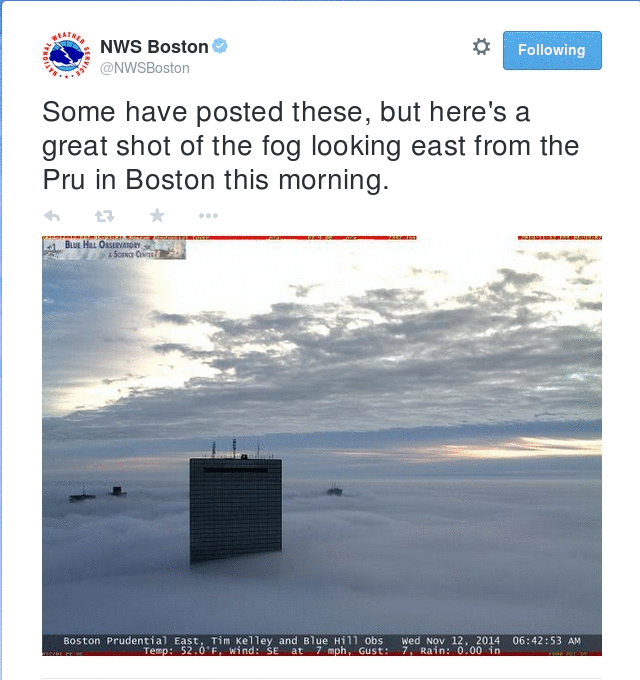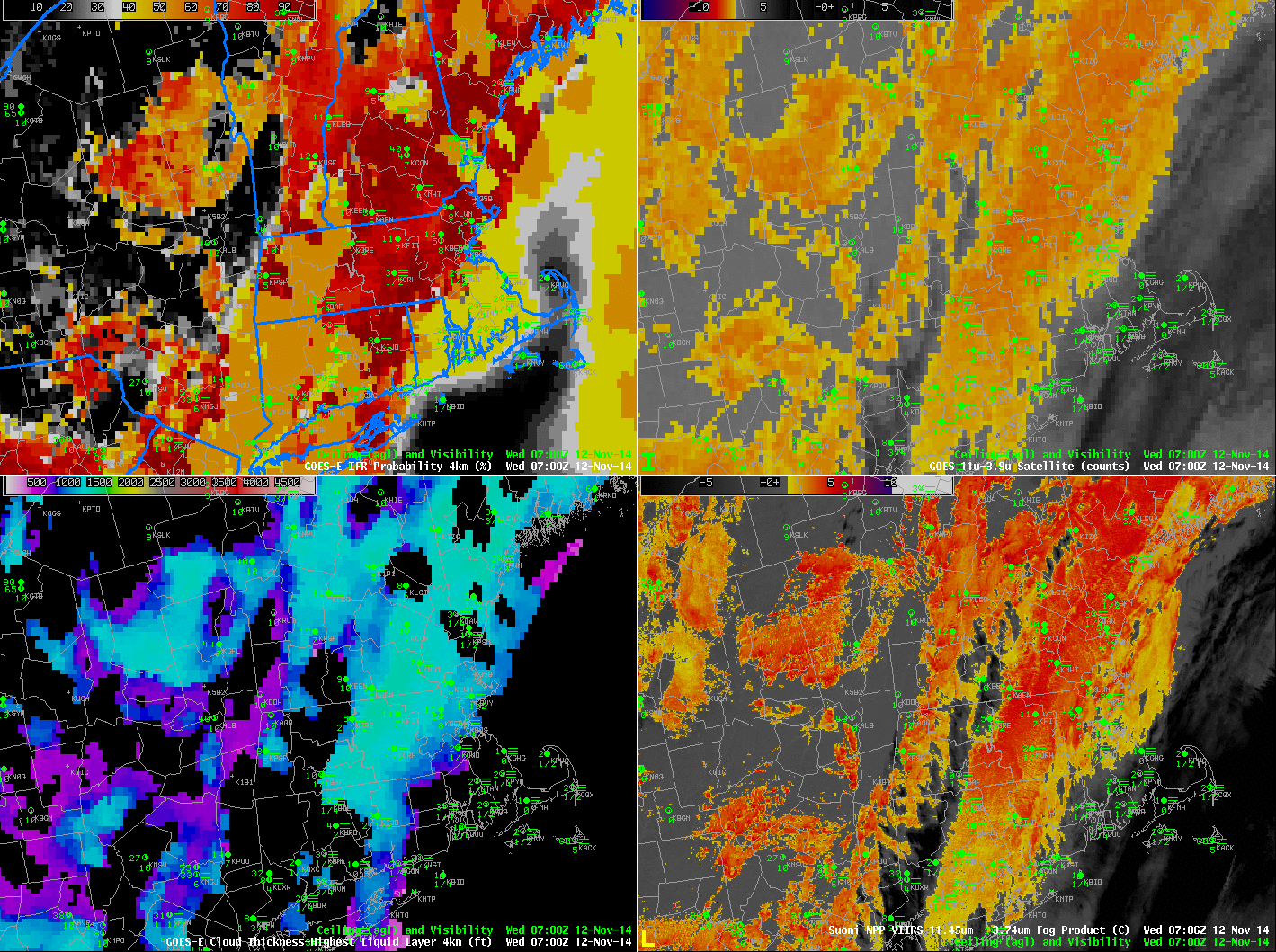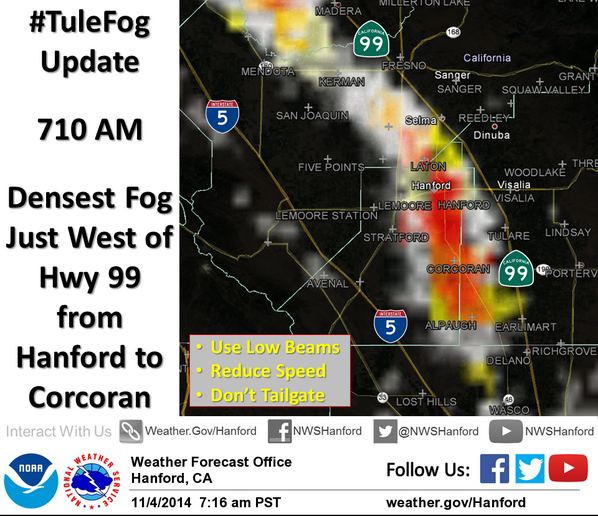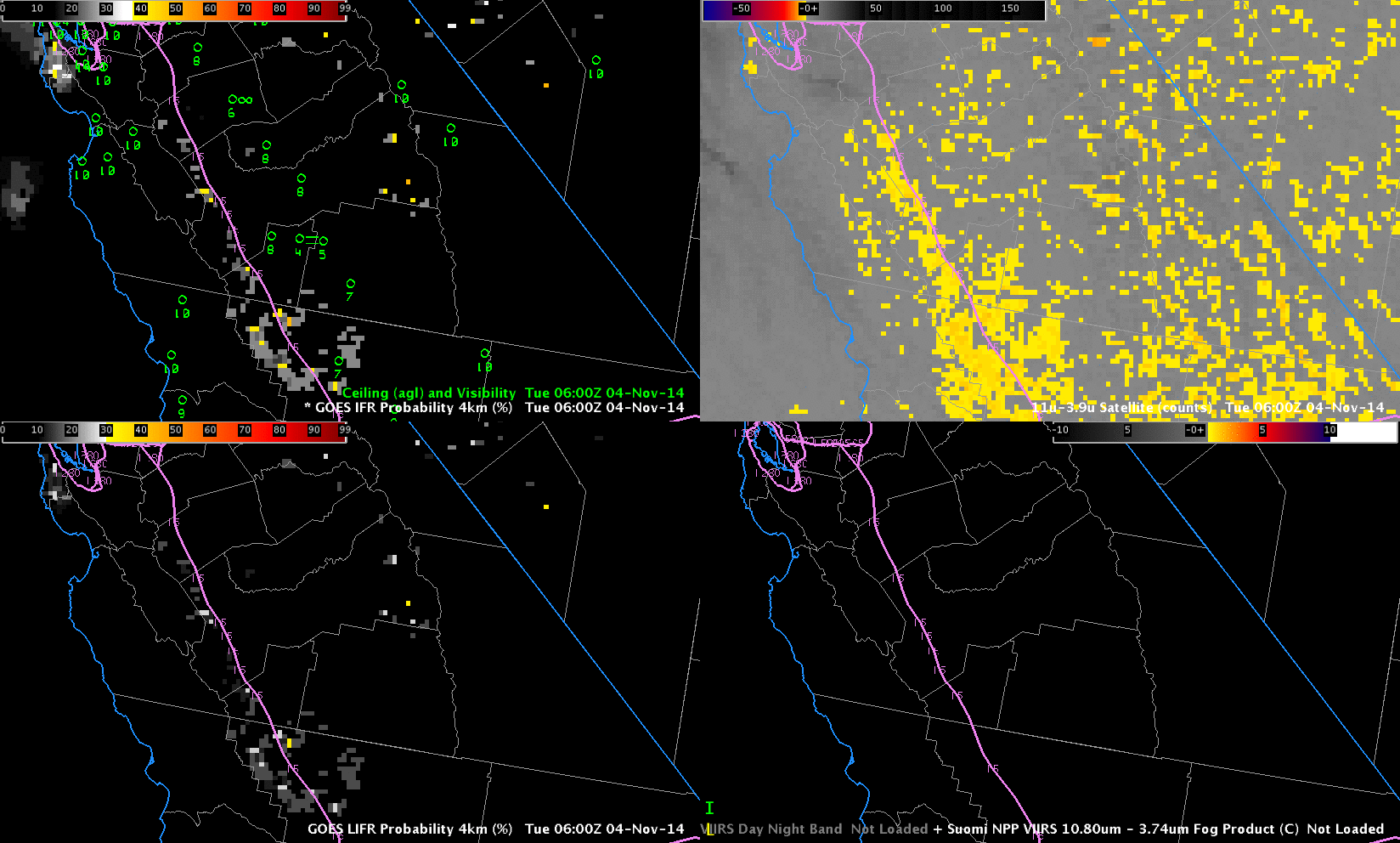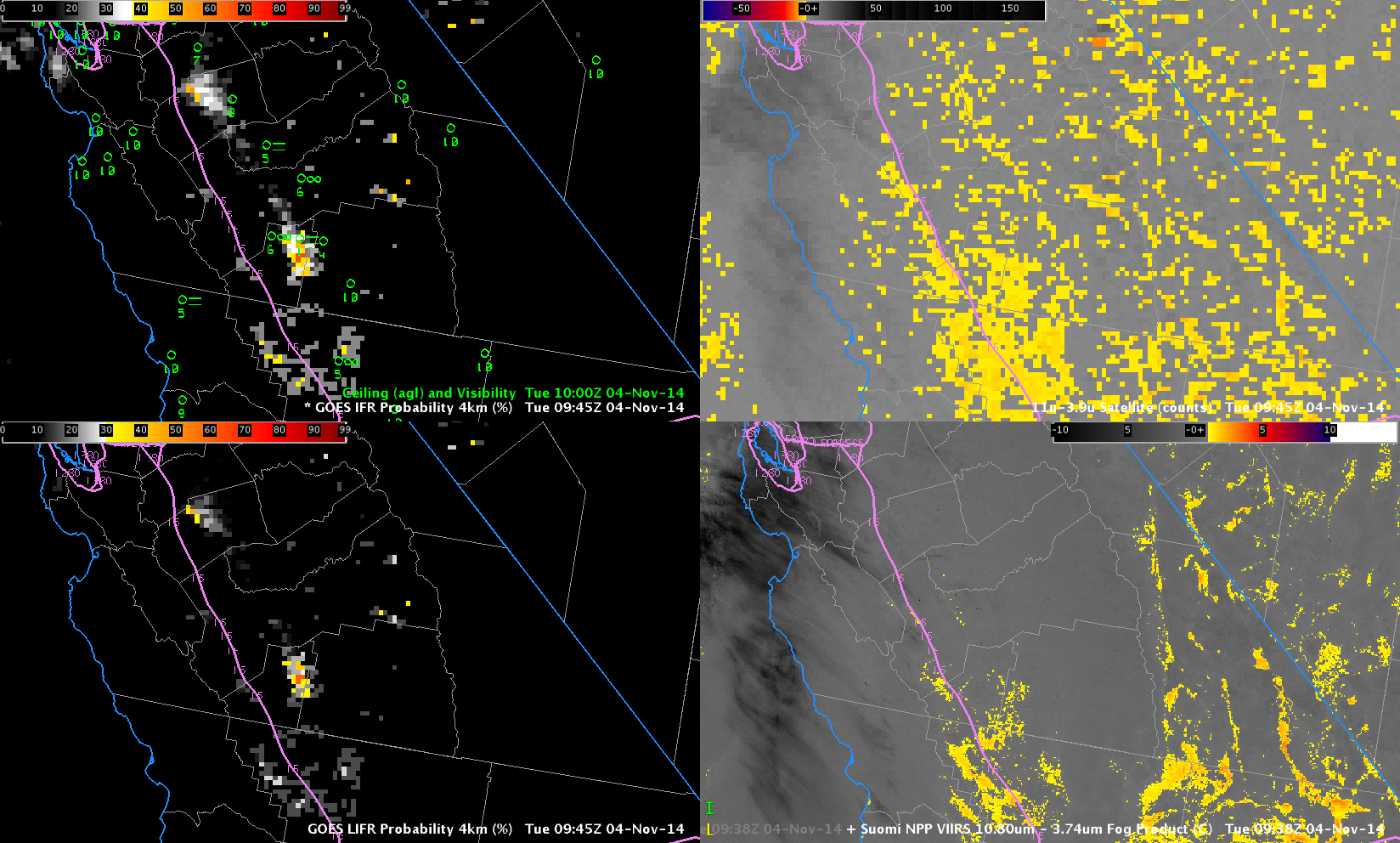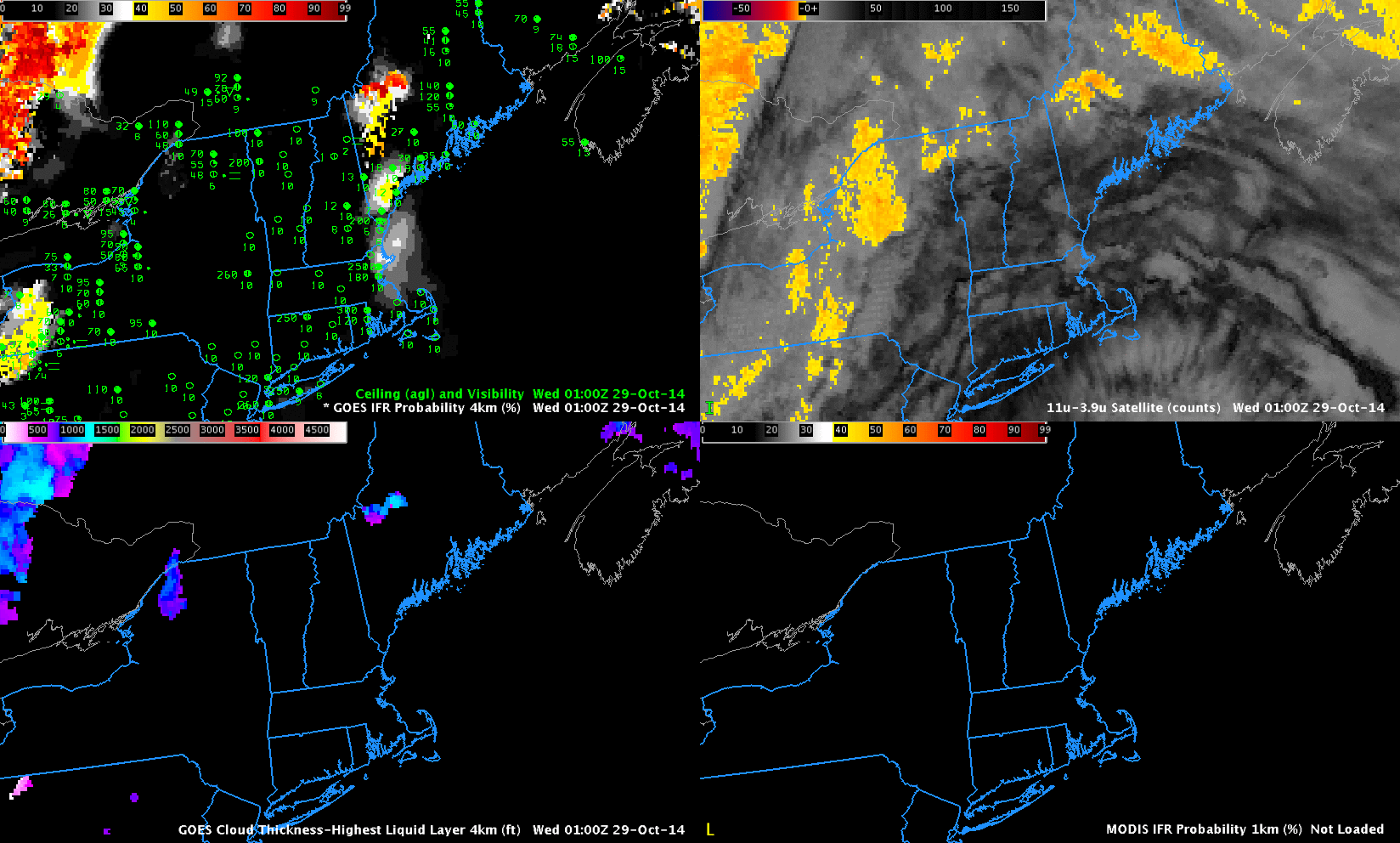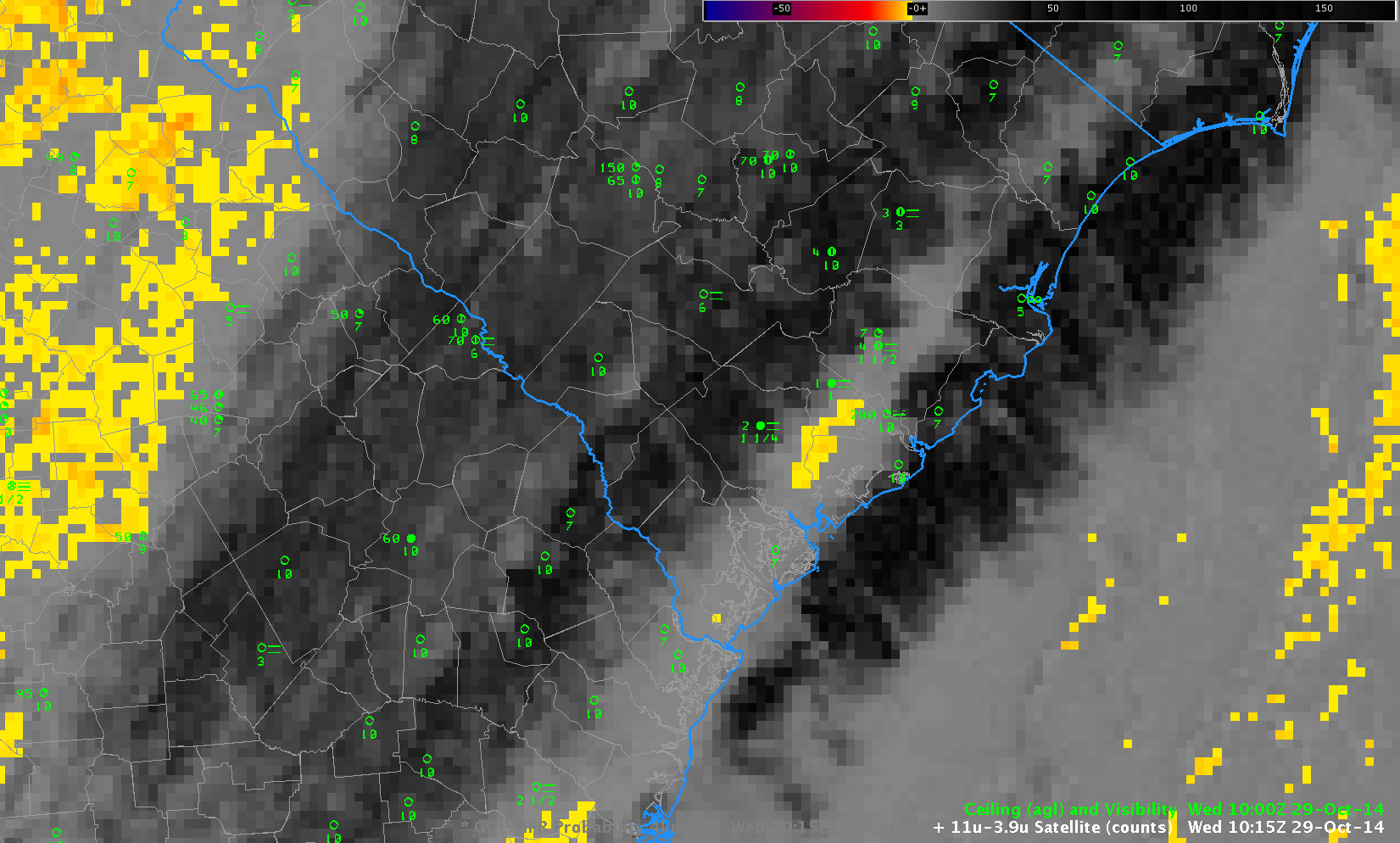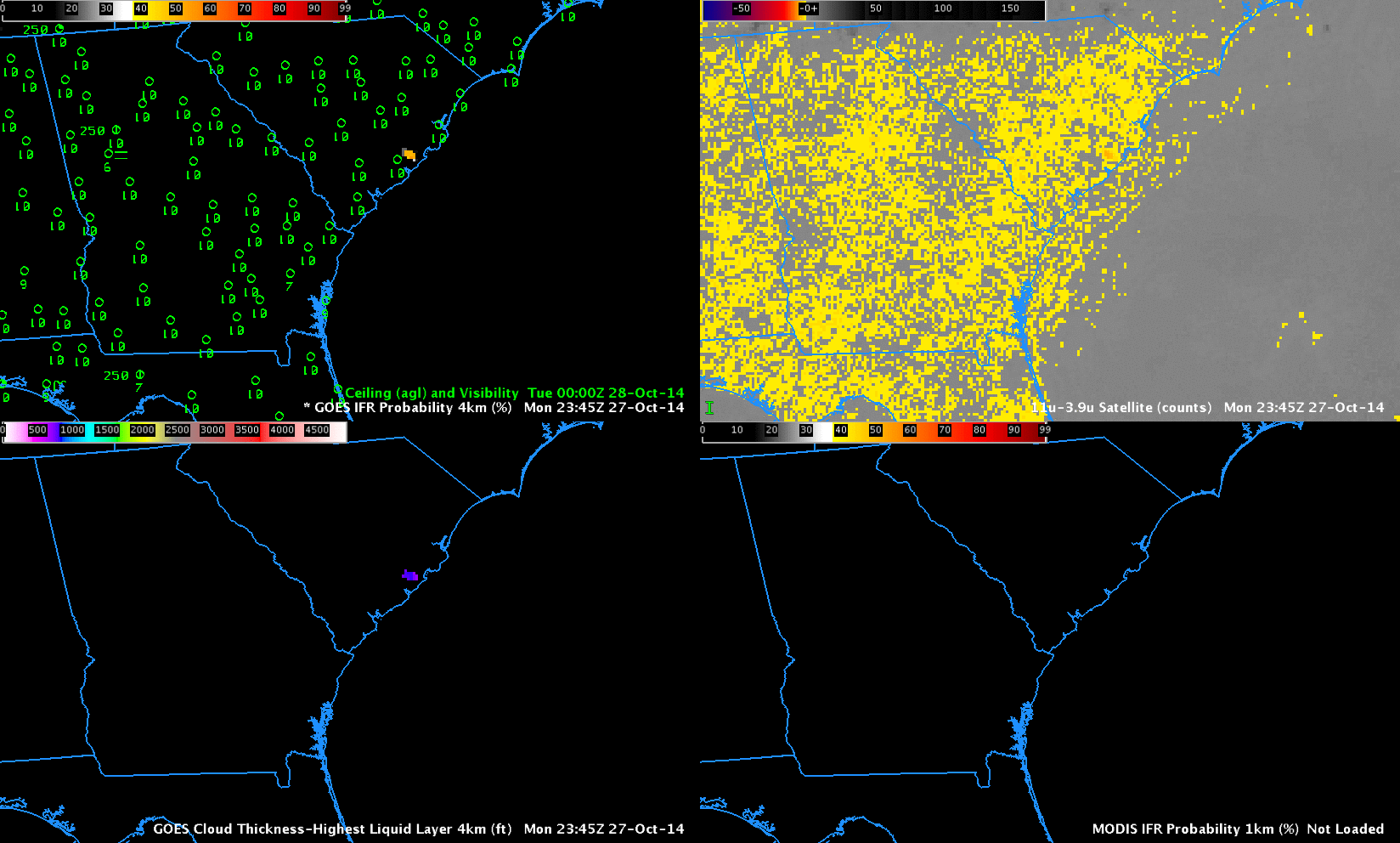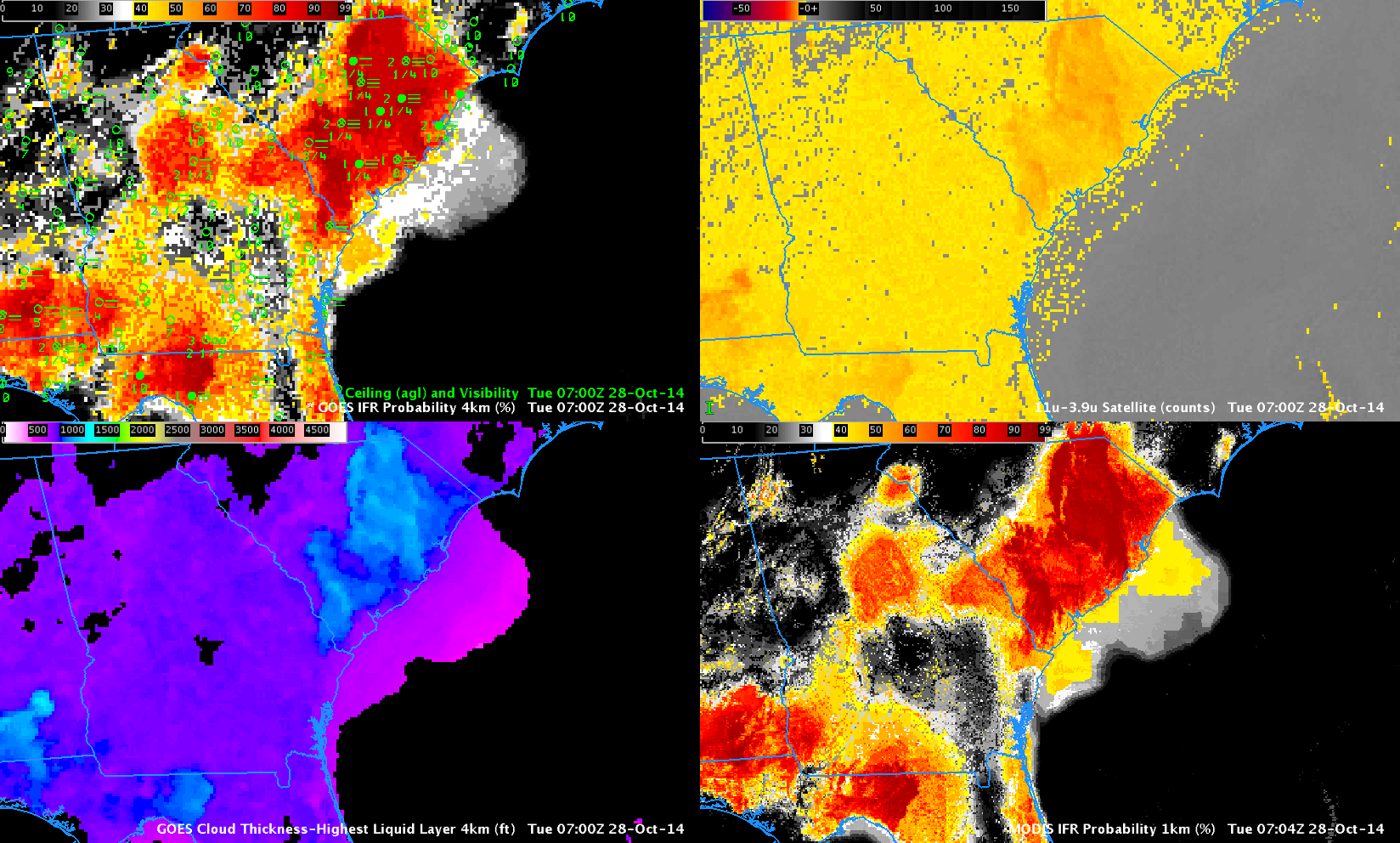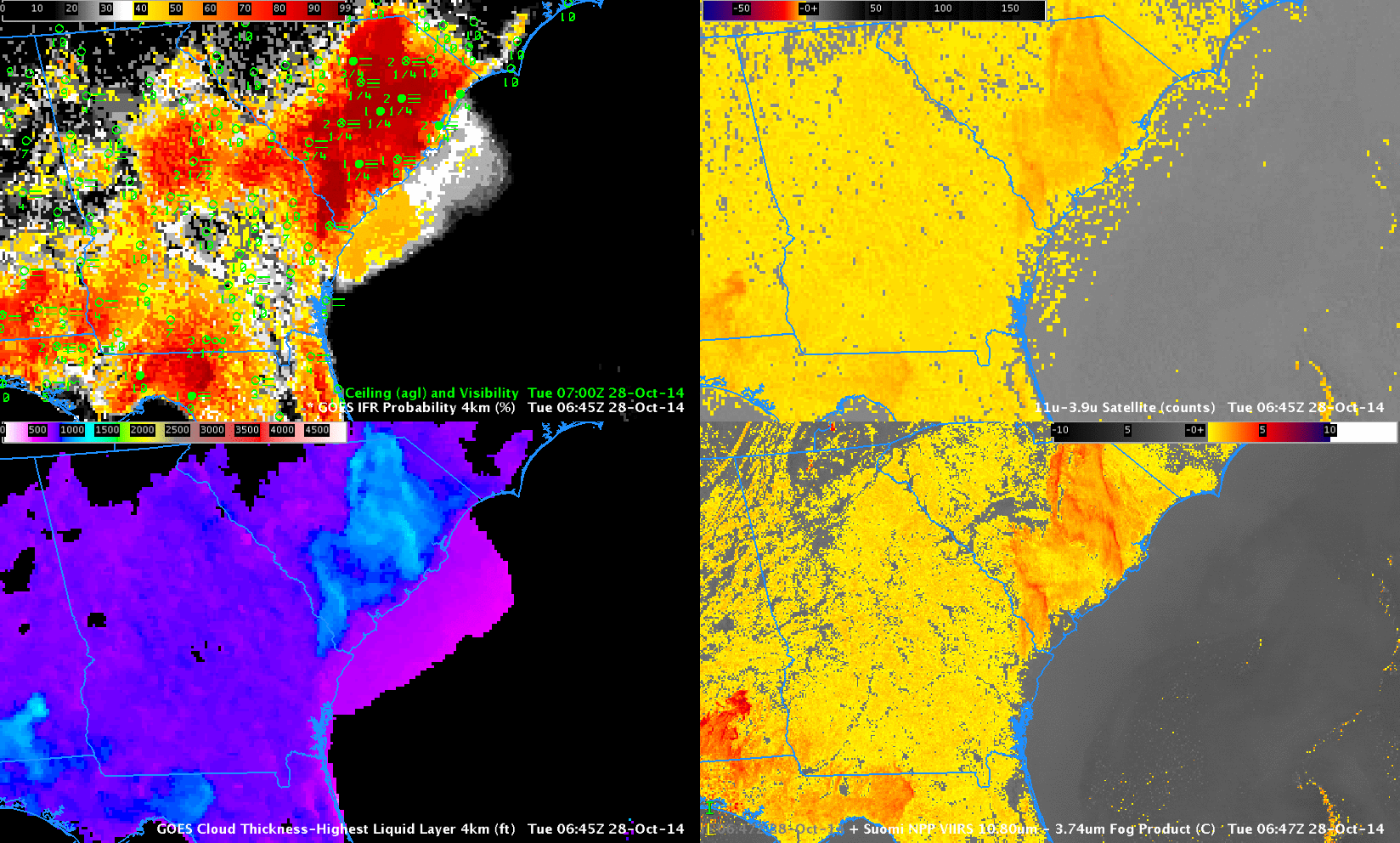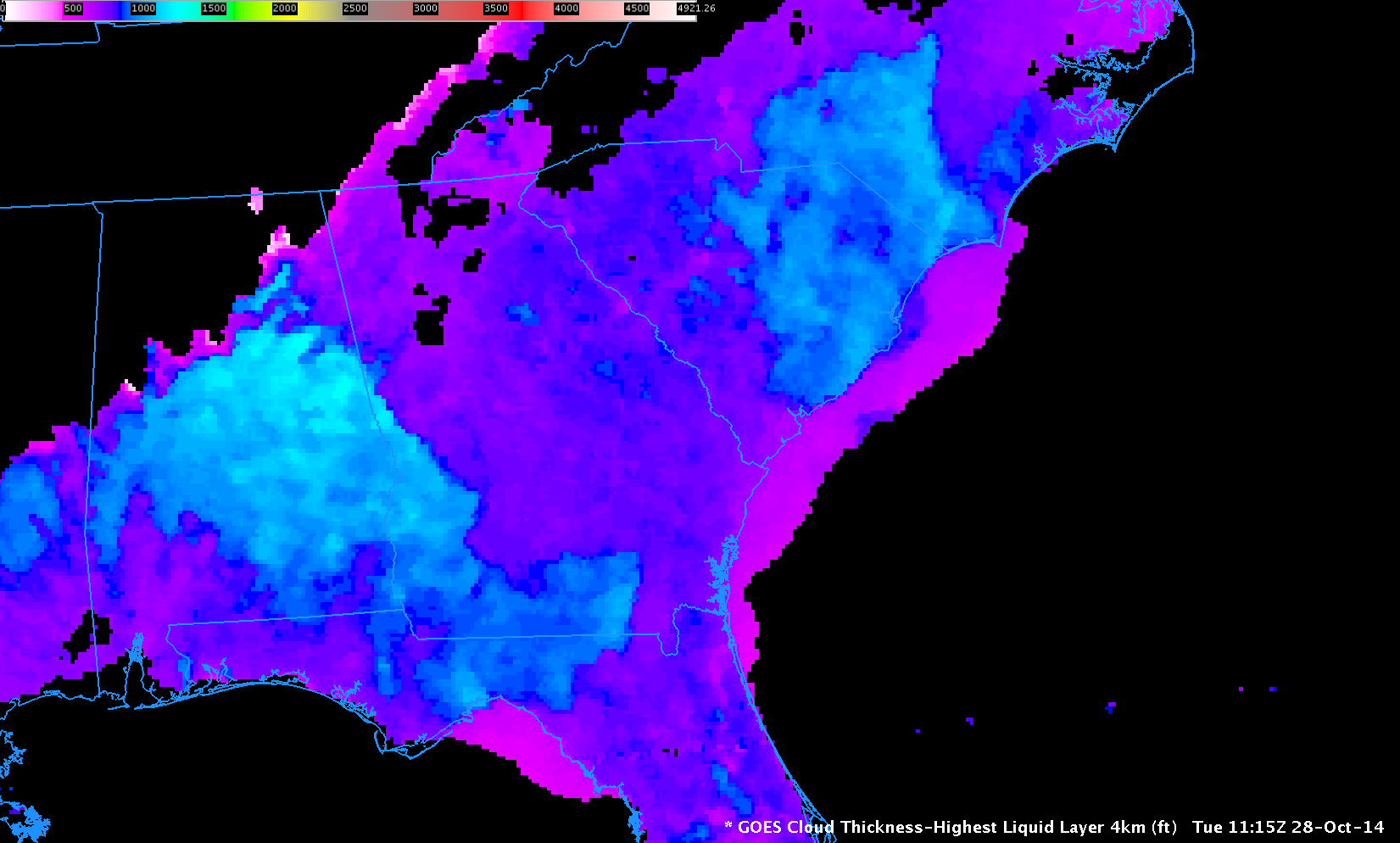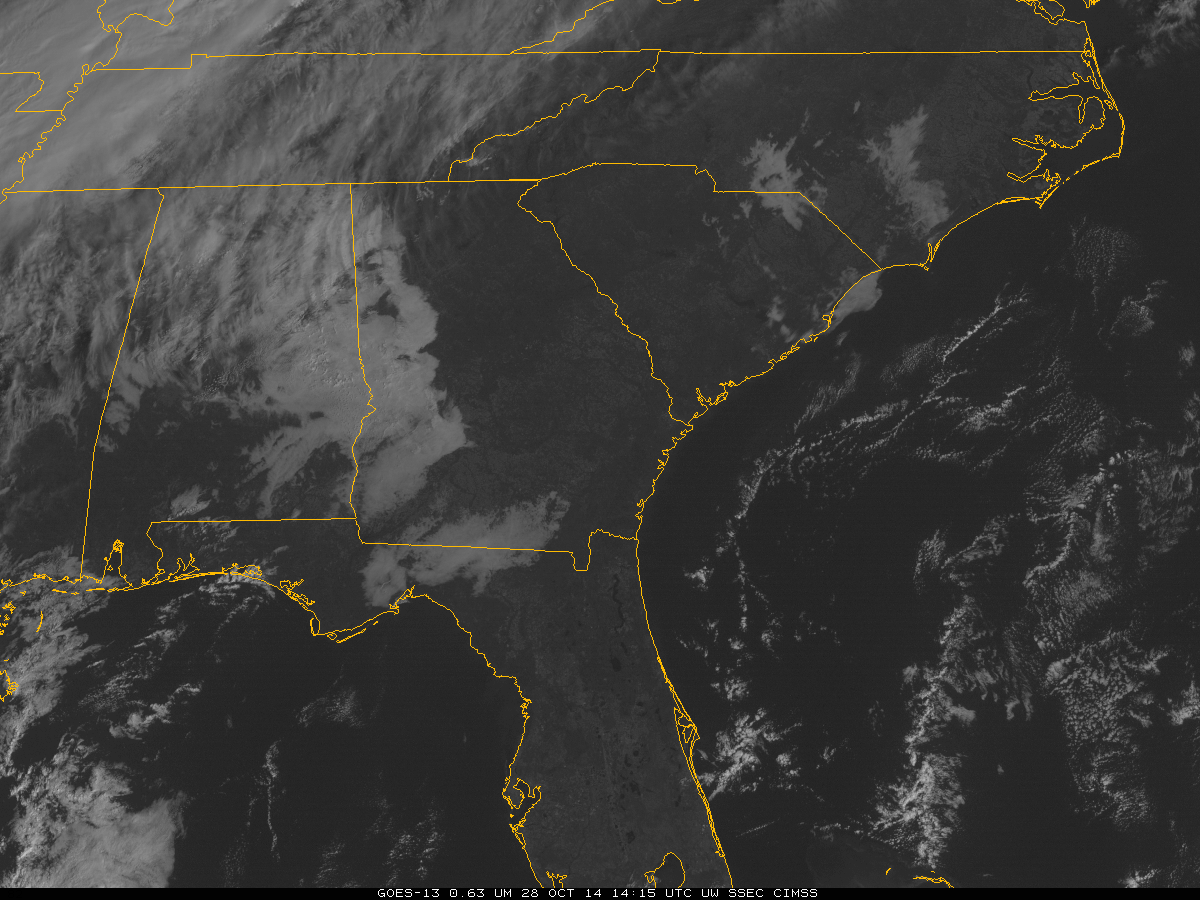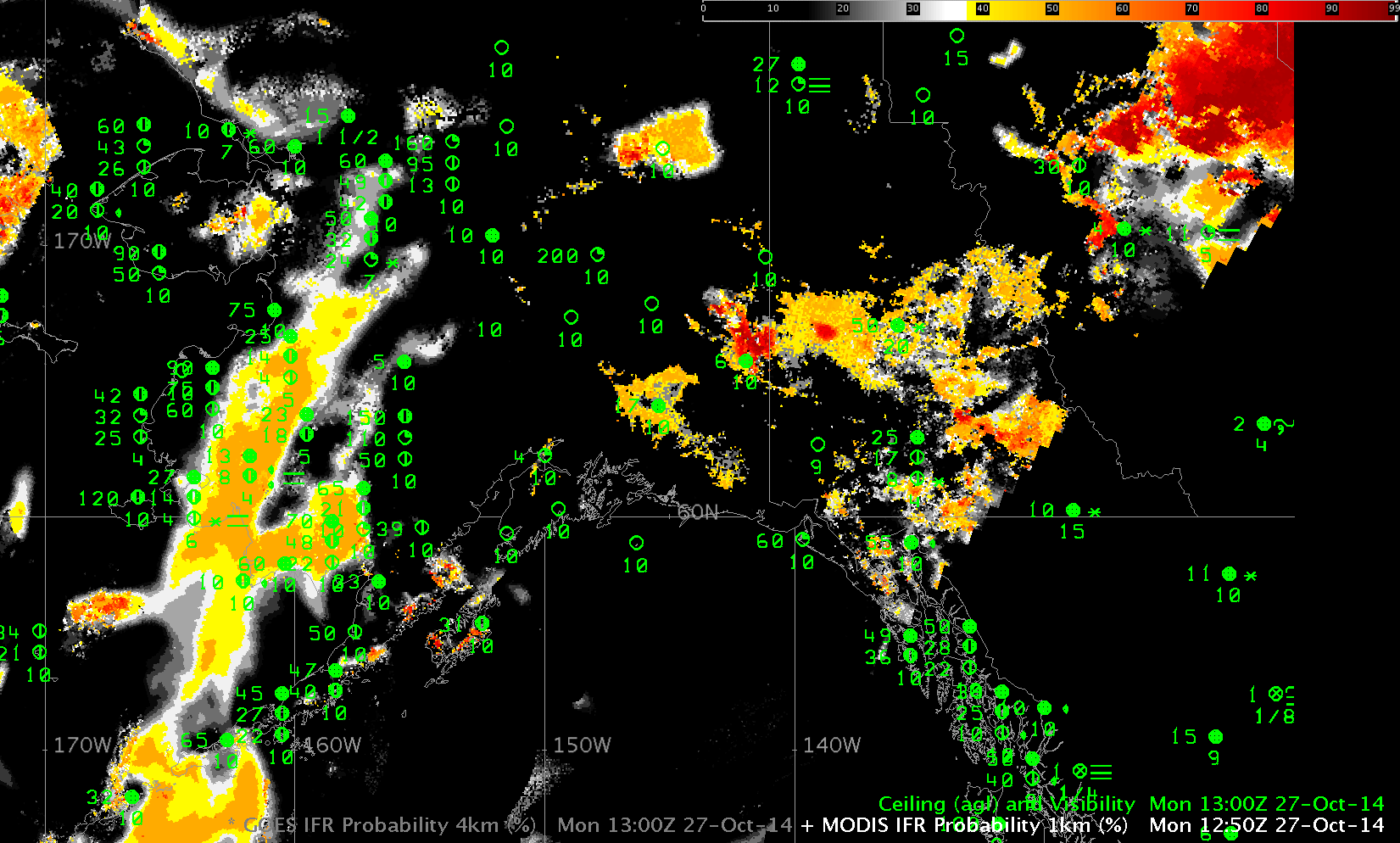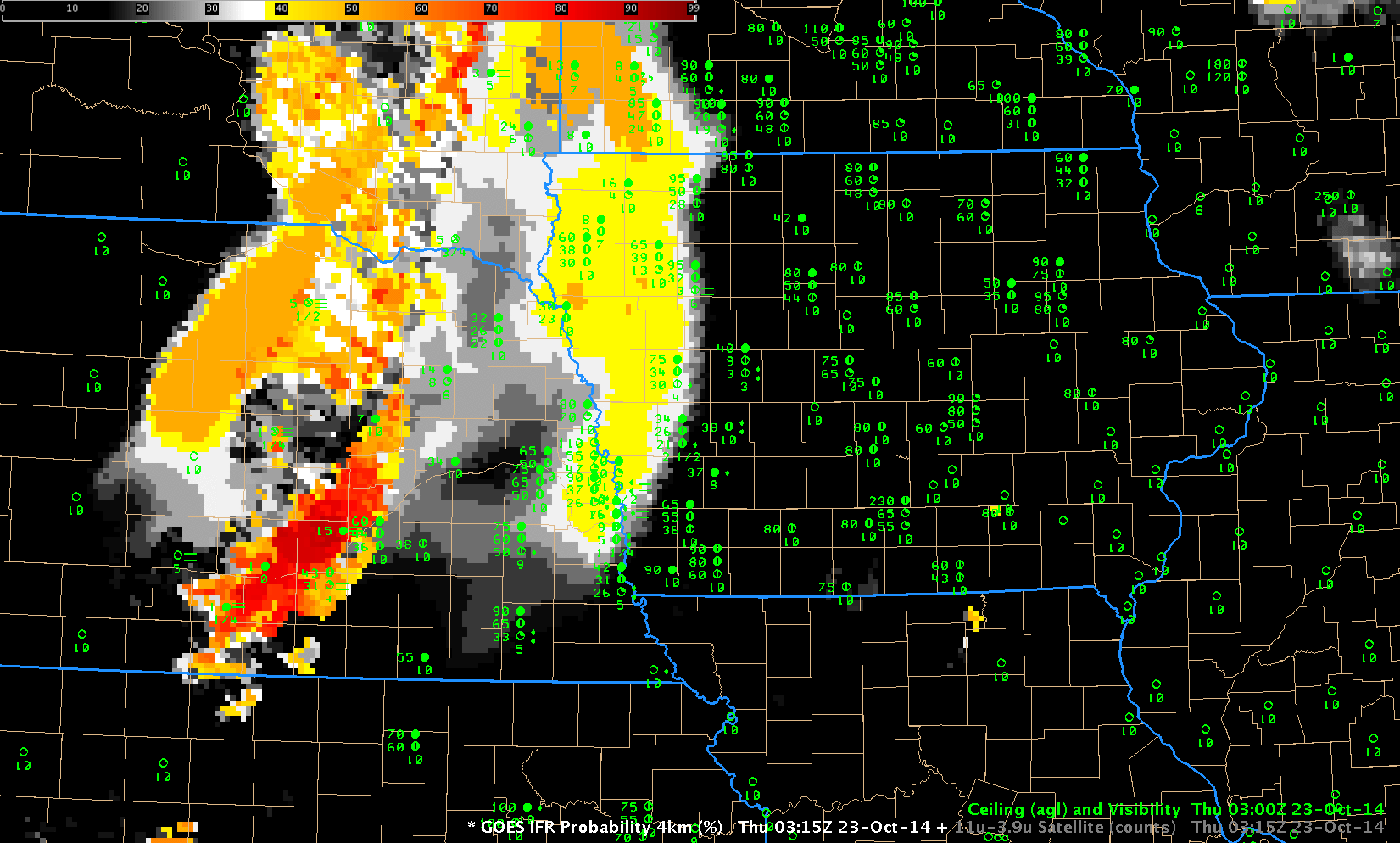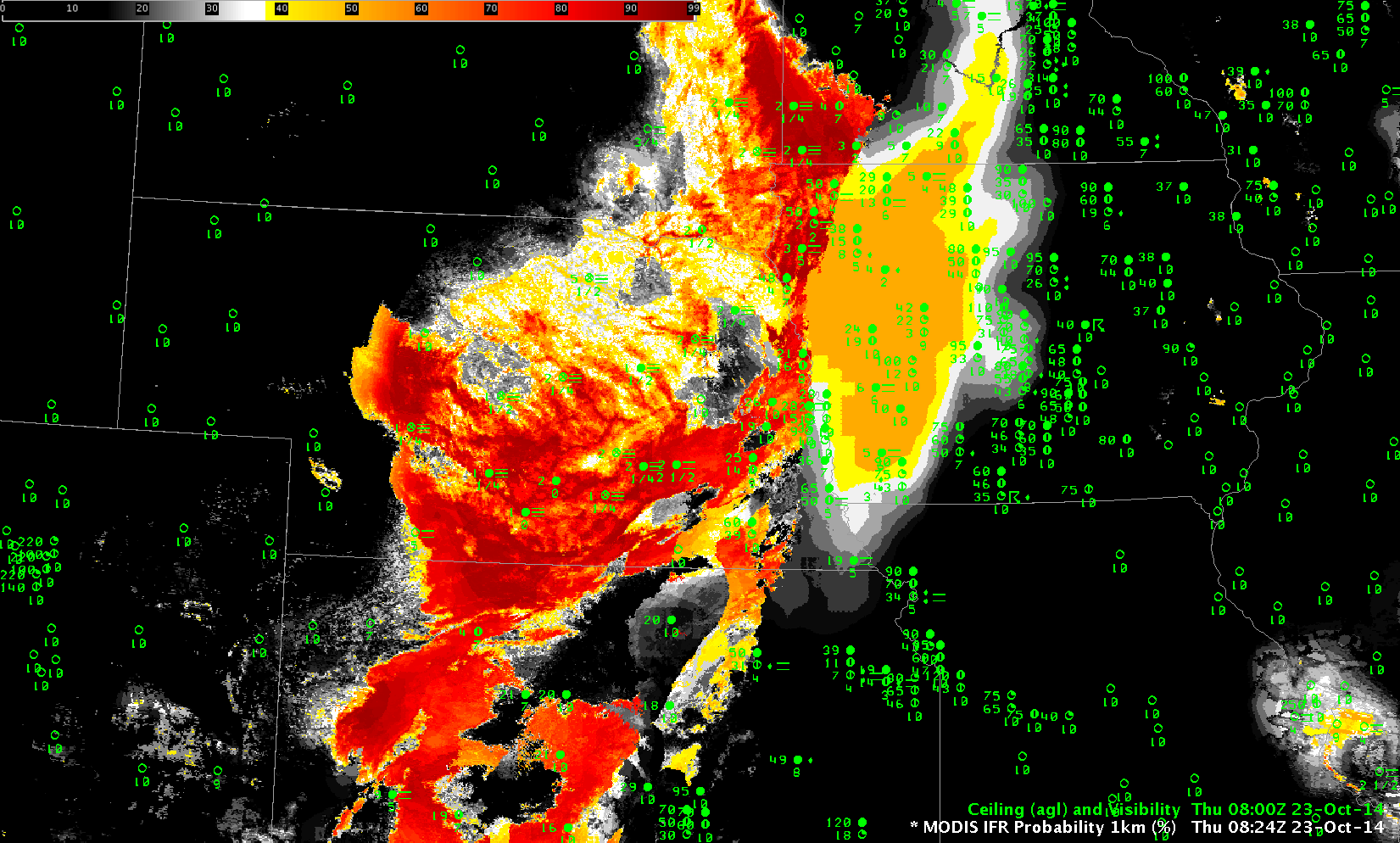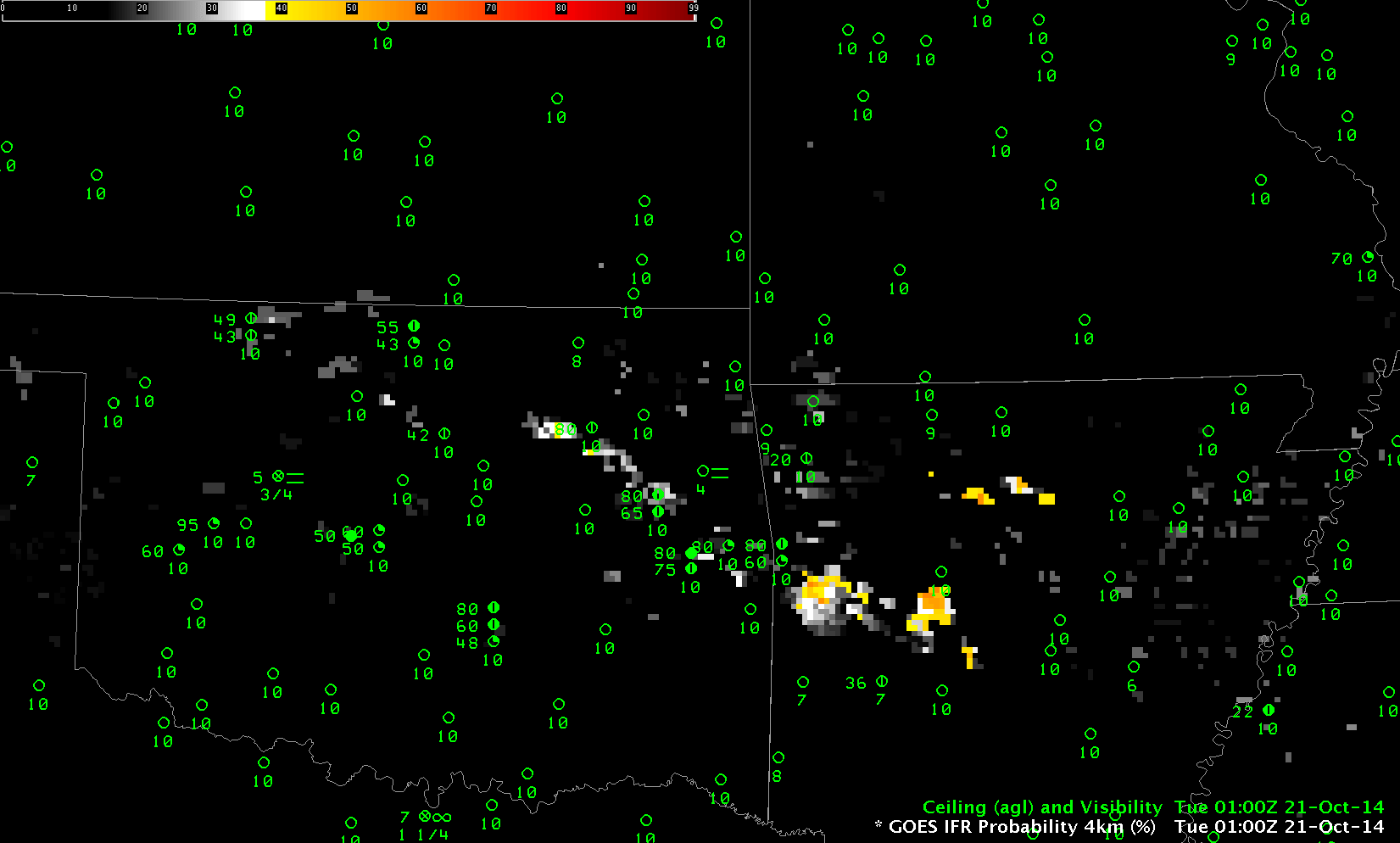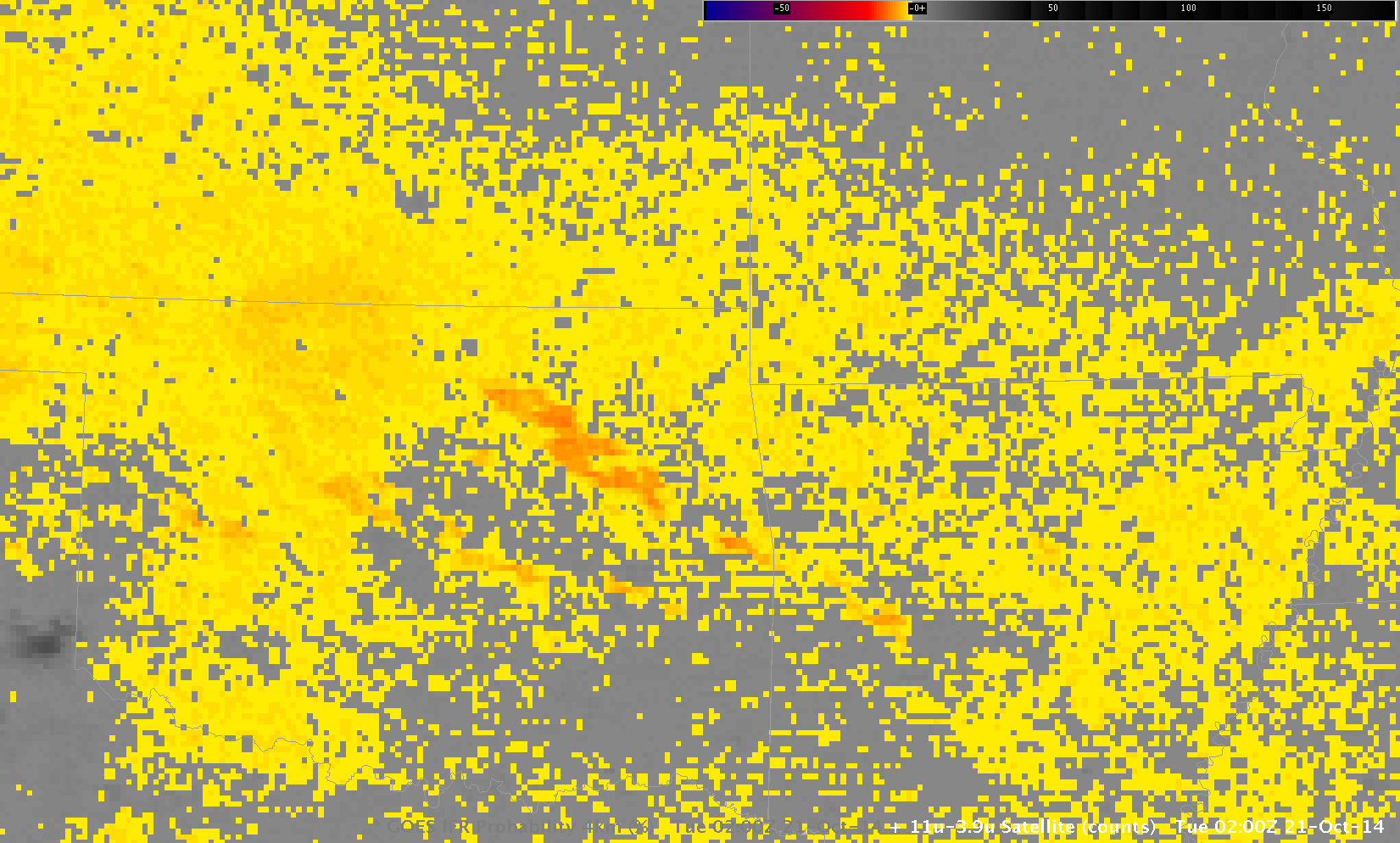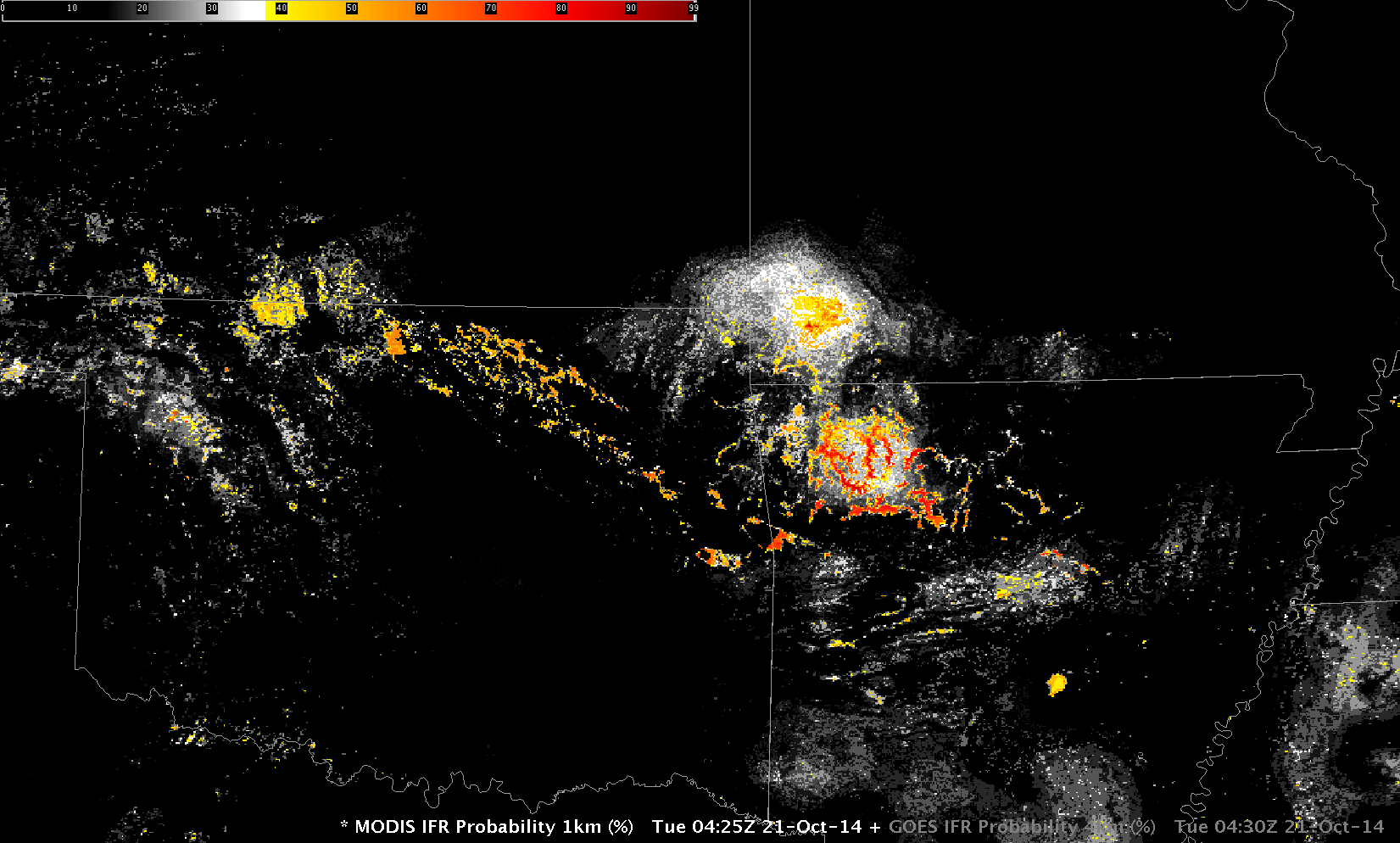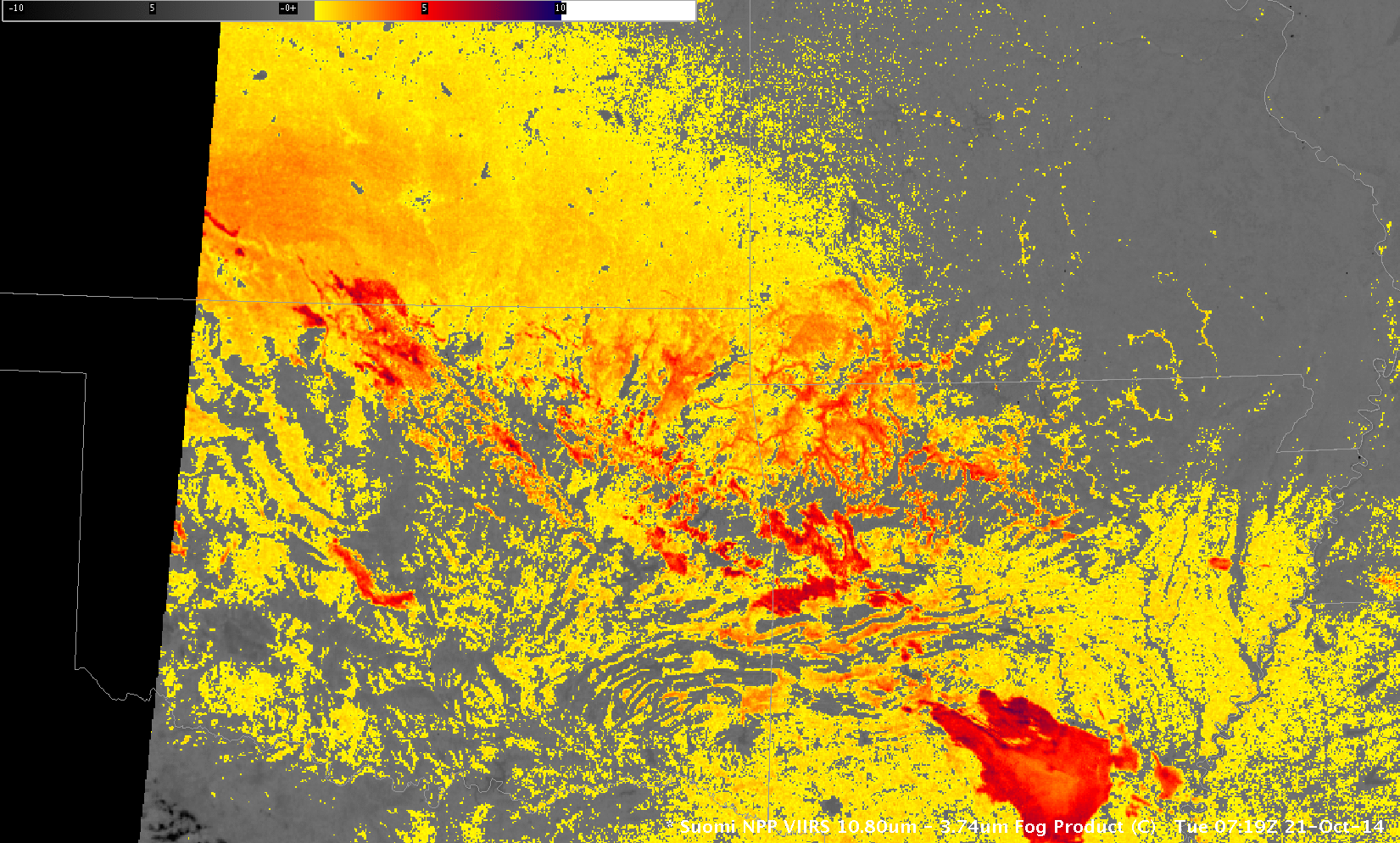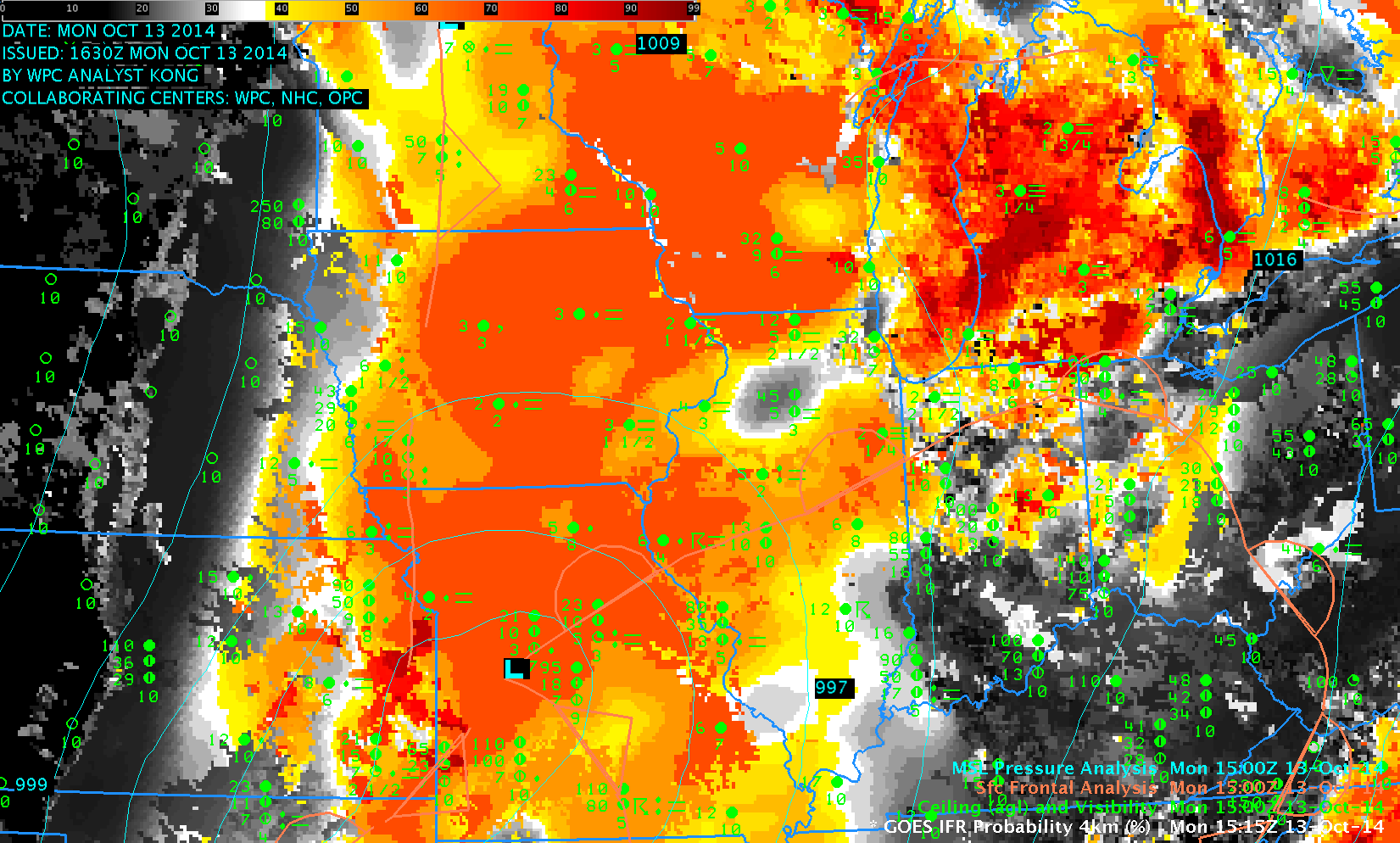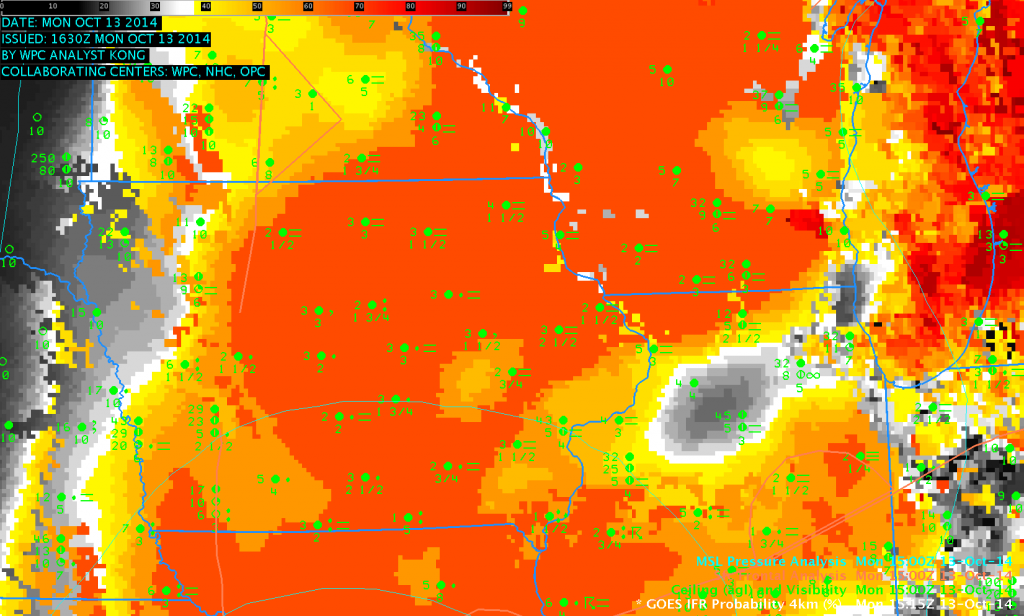Fog overspread much of southern New England overnight on 11-12 November 2014.
From the National Weather Service in Taunton, MA, late in the day on 11 November 2014:
000
WWUS81 KBOX 120001
SPSBOX
SPECIAL WEATHER STATEMENT
NATIONAL WEATHER SERVICE TAUNTON MA
701 PM EST TUE NOV 11 2014
CTZ002>004-MAZ002>024-026-NHZ011-012-015-RIZ001>008-120415-
HARTFORD CT-TOLLAND CT-WINDHAM CT-WESTERN FRANKLIN MA-
EASTERN FRANKLIN MA-NORTHERN WORCESTER MA-CENTRAL MIDDLESEX MA-
WESTERN ESSEX MA-EASTERN ESSEX MA-WESTERN HAMPSHIRE MA-
WESTERN HAMPDEN MA-EASTERN HAMPSHIRE MA-EASTERN HAMPDEN MA-
SOUTHERN WORCESTER MA-WESTERN NORFOLK MA-SOUTHEAST MIDDLESEX MA-
SUFFOLK MA-EASTERN NORFOLK MA-NORTHERN BRISTOL MA-
WESTERN PLYMOUTH MA-EASTERN PLYMOUTH MA-SOUTHERN BRISTOL MA-
SOUTHERN PLYMOUTH MA-BARNSTABLE MA-DUKES MA-NANTUCKET MA-
NORTHERN MIDDLESEX MA-CHESHIRE NH-EASTERN HILLSBOROUGH NH-
WESTERN AND CENTRAL HILLSBOROUGH NH-NORTHWEST PROVIDENCE RI-
SOUTHEAST PROVIDENCE RI-WESTERN KENT RI-EASTERN KENT RI-
BRISTOL RI-WASHINGTON RI-NEWPORT RI-BLOCK ISLAND RI-
INCLUDING THE CITIES OF…HARTFORD…WINDSOR LOCKS…UNION…
VERNON…PUTNAM…WILLIMANTIC…CHARLEMONT…GREENFIELD…
ORANGE…BARRE…FITCHBURG…FRAMINGHAM…LOWELL…LAWRENCE…
GLOUCESTER…CHESTERFIELD…BLANDFORD…AMHERST…NORTHAMPTON…
SPRINGFIELD…MILFORD…WORCESTER…FOXBORO…NORWOOD…
CAMBRIDGE…BOSTON…QUINCY…TAUNTON…BROCKTON…PLYMOUTH…
FALL RIVER…NEW BEDFORD…MATTAPOISETT…CHATHAM…FALMOUTH…
PROVINCETOWN…VINEYARD HAVEN…NANTUCKET…AYER…JAFFREY…
KEENE…MANCHESTER…NASHUA…PETERBOROUGH…WEARE…FOSTER…
SMITHFIELD…PROVIDENCE…WEST GREENWICH…WARWICK…BRISTOL…
NARRAGANSETT…WESTERLY…NEWPORT…BLOCK ISLAND
701 PM EST TUE NOV 11 2014
…PATCHY DENSE FOG POSSIBLE OVERNIGHT INTO WEDNESDAY MORNING…
A WARM AND MOIST AIRMASS BY NOVEMBER STANDARDS WAS OVER
CONNECTICUT… RHODE ISLAND…MASSACHUSETTS AND INTO NEW HAMPSHIRE
THIS EVENING. THIS COMBINED WITH LIGHT WINDS WILL RESULT IN PATCHY
DENSE FOG OVERNIGHT INTO WEDNESDAY MORNING. THERE IS SOME
UNCERTAINTY ON HOW WIDESPREAD THE FOG WILL BE. THUS A DENSE FOG
ADVISORY HAS NOT BEEN POSTED. HOWEVER AT LEAST SOME PATCHY DENSE
FOG IS LIKELY OVERNIGHT. THEREFORE MORNING COMMUTERS SHOULD PLAN
SOME EXTRA TIME TO REACH THEIR DESTINATION. IF FORECAST CONFIDENCE
ON WIDESPREAD DENSE FOG INCREASES LATER THIS EVENING A DENSE FOG
ADVISORY WILL BE ISSUED.
$$
NOCERA
Subsequently, the NWS in Taunton tweeted two times about the fog.
How well did the GOES-R IFR Probability Fields diagnose this fog event? Note the presence of high and mid-level clouds in the picture at top, from the morning of 12 November. Their signature should be in the IFR Probability fields as well, and that is the case.
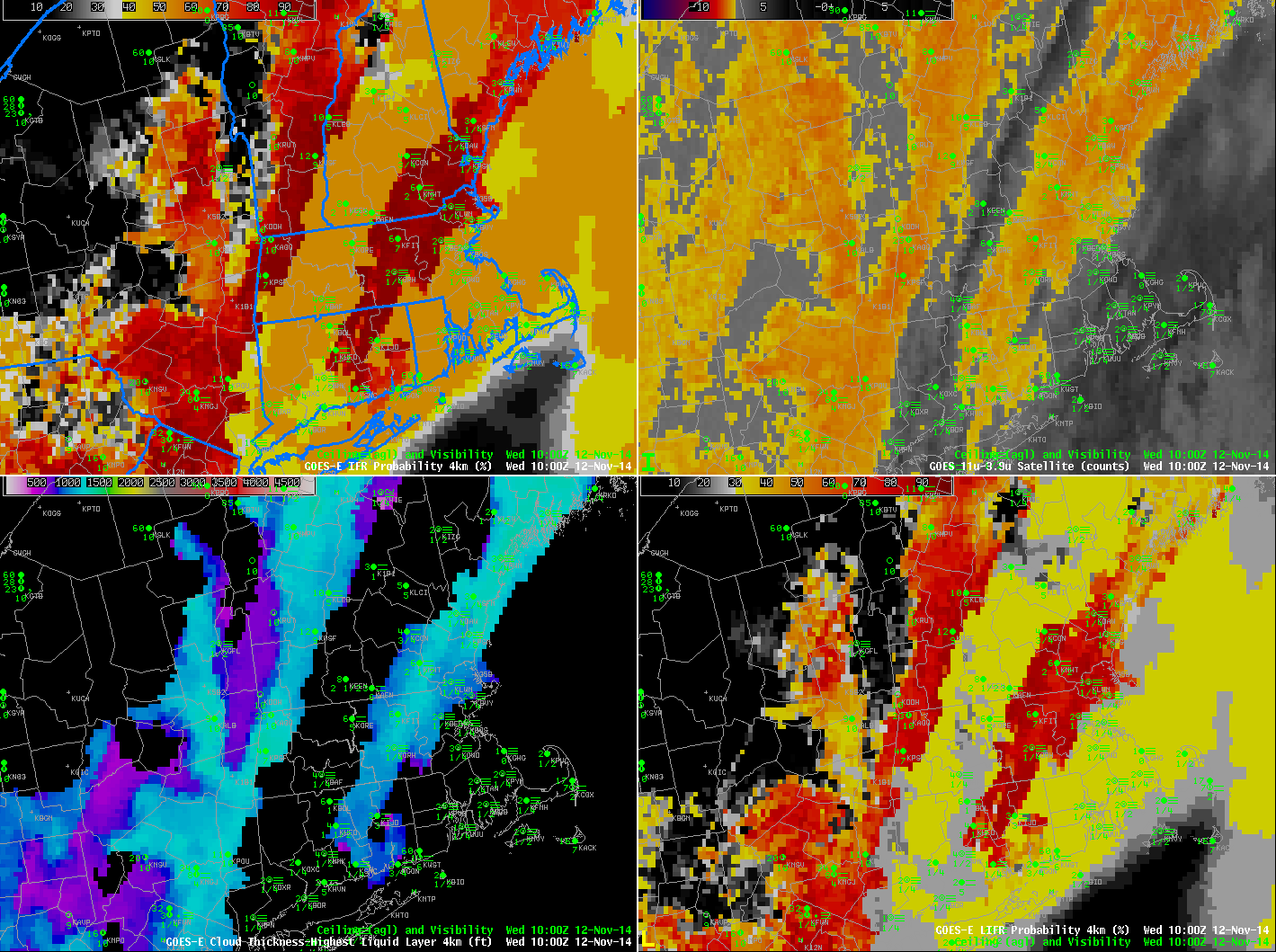
GOES-R IFR Probabilities (Upper Left), GOES-East Brightness Temperature Difference (10.7 µm – 3.9 µm) (Upper Right), GOES-R Cloud Thickness (Lower Left) and GOES-R Low IFR Probability (Lower Right) (Click to animate)
In the animation above, the effect of high clouds is obvious on the IFR (and Low IFR) Probability fields: when mid-level or high clouds prevent satellite data from being used as a predictor in IFR Probability fields, then model data are the main predictors. Model data have coarse resolution relative to satellite data so the IFR Probability fields in those regions have a smoother look that is not at all pixelated. Note how a signal in of low clouds in the Brightness Temperature Difference Field (orange or yellow enhancement) nearly overlaps the more pixelated parts of the IFR and Low IFR Probability fields. Where cirrus/mid-level clouds are indicated in the brightness temperature difference fields, IFR and Low IFR Probability fields are smoother; these are also regions where the GOES-R Cloud Thickness (which field is of the thickness of the highest water-based cloud viewed by the satellite) is not computed because ice-based clouds are screening any satellite view of water-based clouds.
Note how southeastern Massachussetts in the animation above — under multiple cloud layers — has relatively small IFR and low IFR (LIFR) Probability values in a region where dense fog is reported. This arises because the model being used — the Rapid Refresh — to generate IFR Probability predictors is not saturating in the lower levels. It is important to remember that when satellite data are missing, only model data are used to generate GOES-R Fog/Low Stratus products. To rely on only the IFR Probability fields as an indication of the presence of fog is to believe the model simulation in that region is correct. Sometimes the model simulation is correct (this case, for example); in the present case, however, there were regions in southeastern Massachusetts where the model forecast did not accurately represent the observed conditions.
Suomi NPP overflew New England around 0700 UTC on 12 November, and the data collected are included in the image toggle below. Suomi NPP better resolves some of the smaller valleys in interior New England, and some of the sharp edges to the fields.

